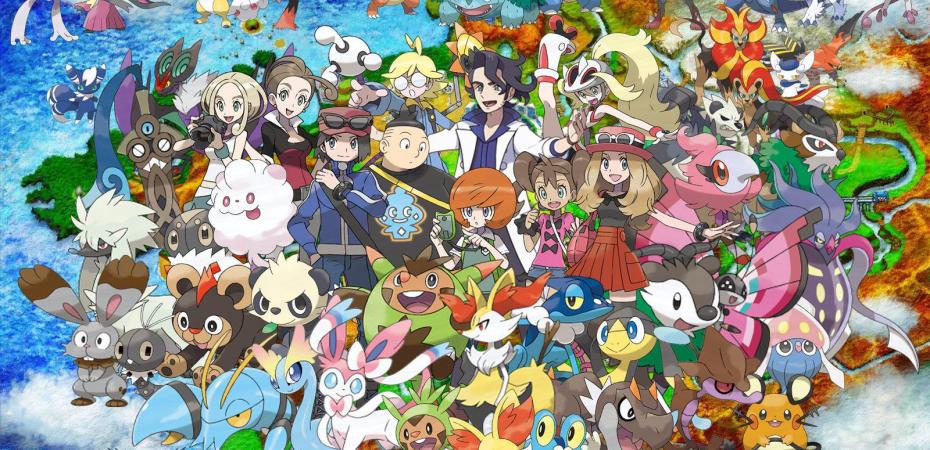I’m fired up, so get ready.
In today’s latest gamer outrage, some side-by-side comparisons from the upcoming Pokemon installment Sword/Shield point to the fact that Gamefreak is re-using assets developed originally on the 3DS. This news, paired with the recent development that not all Pokemon would appear in the next entry to the main series has fans up in arms about the recycling of assets from older games.

I’d be hard-pressed to think of something that gamers don’t complain about. Being a game developer in 2019 is bar-none the hardest job in engineering from an emotional perspective, hands down. Forget the obscene amounts of (unpaid) overtime, better known as “crunch time,” reported for major releases the past few years. It’s thankless, like most engineering jobs, but with the added bonus that armchair developers love to explain how it works, despite having spent precisely zero minutes developing a Hello World app, let alone an entire video game.
First of all, let’s start with the obvious: this isn’t news-worthy. None of this. In fact, it has been Gamefreak’s plan to re-use assets since the release of Pokemon X/Y. In 2013.
The Pokemon models were created to withstand the test of time, and their resolution was shrunken down to fit on the 3DS and to run within a reasonable framerate. What can be done is higher resolution textures can be applied to these models, but the animations will stay the same.
To the people complaining or calling Gamefreak lazy, I have a few questions for you:
- Do you really expect Gamefreak to re-engineer each game from scratch, including all designs, animations, and worlds?
- Do you think starting the development of a new game starts with going to File > New Project and re-creating every single asset from scratch?
- Have you considered the volume of work required to get this done with each new release would be exponentially more work as the graphical fidelity generally increases with each generation, not to mention the introduction of even more Pokemon to the Pokedex?
Clearly, the people who take issue with this and are calling Gamefreak “lazy” have absolutely not one microcosm of knowledge about the established and well-recognized practices in the development world.
It’s really this simple: re-creating the entire Pokedex with every release would be insanely expensive, not to mention totally pointless and impractical.
I’m not a game developer – but I am a web developer, and part of my job is building tools that can be, you guessed it, “recycled” for future projects. This is not news. None of this is uncommon. If my manager told me to rebuild an entire service from scratch because it’s a new project, I’d immediately quit and move to a company that isn’t run by morons.
In the development world in and outside of video games, the most common thing to avoid is reinventing the wheel. It’s literally one of the things that marks a good developer – code re-usability. In this case, that code is in the form of designs and animations, and Gamefreak did an excellent job at this.
A few years ago, someone managed to get Pokemon X/Y running on a 3DS emulator in 1080p, and the animations for the Pokemon looked incredible – because they were made to be upscaled in HD. You can see how nice the animations look down below. This is, of course, not how they appeared in Pokemon X/Y, as they are heavily down-rez’d, but when you upscale them, they still look smooth because of the heavy detail.
Yes, at some point, Gamefreak will need to bite the bullet and re-create all of these animations from scratch. But not a mere six years after creating them. They were created 6 years ago to be used now. That’s how good development works. I’m not defending Gamefreak’s development practices as I’m completely unfamiliar with them – but recycling assets from previous titles is Development 101.
If you open any SDK (that’s Software Development Kit) for games that include it, you’ll easily find references to other games that were created in that SDK. The biggest example of this are Bethesda titles created using the Creation Engine. Fallout and Skyrim share a ton of assets. Valve games and their unofficial spin-offs made in the Source engine are another example of common asset recycling.
Because that’s what happens. That’s called good development. That doesn’t mean they don’t care – it means they’re smart, and want games to come out every 3-4 years, and not once every decade.
Imagine for a second that every auto maker suddenly stopped re-using designs. With every single vehicle concept, they’d have to, quite literally, reinvent the wheel. Reinvent the combustion engine. Reinvent the air conditioning system. See what I’m saying? This is absolutely no different.
And if you think for a second that this still doesn’t apply to video game development, then you need to get off your computer, and go play outside before it’s September and you start 4th grade.
On a different note, remind me to stop reading comments on nonsense articles. And as always, if you disagree with anything here, please leave your need for validation in the comments below.

Stay away from the comments section! Erm… except this one 😛 It’s honestly quite sad what people get outraged by in gaming these days. I see so many posts nitpicking the most granular details of a game and I’m just over here overlooking them because the experience of playing the game is wonderful. In that scenario, I know who I’d rather be! 🙂
LikeLiked by 1 person
Agreed – they get pissed off over trivial stuff that is totally irrelevant, then as the entire gaming industry rapidly goes up in flames and turns into a streaming subscription microtransactional nightmare from the butthole of Satan himself, they feed the fire with their hard-earned cash. It makes no sense whatsoever.
LikeLike